Key takeaways:
- 54% of US adults report donating to charity, but only a very small minority report using a recognized charity evaluator when doing so (around 2% of donors - of these, the majority reported Charity Navigator, whereas only 2 people reported GiveWell)
- Higher educational attainment was associated with a greater likelihood of reporting having used a recognized charity evaluator.
- US adults tended more towards disagreeing (44%) than agreeing (31%) that it was both possible and morally good for most people in the US to donate 10% of their incomes to help alleviate poverty in low-income countries.
- We estimate that US adults likely underestimate their income relative to the income of the rest of the world
The results presented here are based upon the responses of 4,890 US adults[1], who completed the Pulse survey between July and September 2024. The full report can be accessed on our website or as a PDF, which includes more detailed methodological and background information.
Charitable giving behavior and attitudes
Respondents were asked to indicate whether they had donated to any charities in the past 12 months. If yes, they were asked whether they had used a charity evaluator to aid with their decision. Based on such self-report, we estimate approximately 54% of US adults have donated to charity over the past 12 months (this closely matches estimates from YouGov, which estimated US giving at 54% in 2022). However, few use a charity evaluator.
Donation behavior
Among those who reported using a charity evaluator, we also looked at the name of the charity evaluator they reported to determine whether it was in fact a formal charity evaluator (i.e., an organization that assesses various charities to determine their likely impact, trustworthiness, or cost-effectiveness). We found that even fewer people provided the name of a confirmed charity evaluator (in this case, the response was overwhelmingly Charity Navigator). Hence, only a small proportion of people who donate appear to do so using any kind of formal evaluation. An even smaller minority of these - only two respondents - referred to an effective-giving focused charity evaluator (in these cases, GiveWell). This is understandable given that awareness of effective-giving focused organizations such as GiveWell and Giving What We Can, was estimated as very low in the same sample of US adults (see here).
We found that with increasing educational attainment, the proportion of people who reported donating increased, as did the proportion of people who donated using a confirmed evaluator. Importantly, this trend of more highly educated respondents being more likely to use a confirmed evaluator was not solely due to them being more likely in general to make donations. Among donors, more highly educated respondents were proportionally more likely to report having used a charity evaluator.
Attitudes towards a ‘10% pledge’ for most people in the US
Some organizations in the effective giving space - such as Giving What We Can (GWWC) - advocate for wealthy people (relative to the world population) to pledge 10% of their income to effective causes. The giving pledge of GWWC highlights that people earning $47,000 or more per year after tax are in the top 2% of incomes globally, with $62,000 being in the world top 1%. This value is slightly below the median US household income after tax of $64,240 as of 2022 (according to the US Census Bureau).
We were requested to poll the US public to assess the extent to which US adults would agree with the view that it would be both possible and good for most people in the US to take such a pledge, given their relative wealth. We stress that the statement assessed and reasoning provided differs in both tone and exact content to pledges such as the GWWC pledge. We presented this question to half of the respondents who took part in the survey (with the other half answering the relative income question in the following section). The wording of the perspective was more forcibly phrased than the rationales that accompany real giving pledges:
"It has been noted that, by global standards, even average incomes in the United States reflect a level of wealth and standard of living that is higher than most other people in the world.
As a result, some people and organizations argue that it is both possible and morally good for most people in the United States to donate 10% of their incomes to charities aimed at improving the lives of people in low income countries.
To what extent do you agree or disagree with this perspective?”
We estimate that more US adults would tend to disagree than to agree with such a view, and in particular observed more than three times as many Strongly disagreeing than Strongly agreeing. Moreover, this tendency towards disagreement was evident across income levels (Figure 25), and in every specific subgroup except Democrats, Black or African American respondents, and 18-24 year olds, who showed approximately even agreement and disagreement.
Beliefs about own income relative to the rest of the world
As noted in discussion of the 10% pledge in the previous section, part of the reasoning behind people taking such a pledge is the relative wealth of individuals in the US in comparison to lower income countries. However, it is expected that US adults might underestimate their relative wealth. We therefore asked half of the survey respondents to provide an estimate of what percentage of world households they thought their household income was greater than (the other half answered the 10% pledge question above).
Although we cannot precisely line up respondents’ incomes with other global households (as we do not know their exact income, their income after tax, nor household/family structure), we can get a sense of how people believe their income stacks up relative to the rest of the world - and accordingly, possible misconceptions - by breaking responses down by household income.
US adults likely underestimate their relative wealth. We can see this both when using the estimated means of each income subgroup, or their estimated modes. The mean reflects the ‘average’ estimate from each income level, which may be affected by people who provided very high or low numbers relative to most people in that income bracket. The mode reflects the single most common expected response someone might give from that income bracket.
As an example, we estimate that those with a pre-tax household income of $50,000-$79,999 on average believe that this is greater than 43% of world households, with the most common response being 30%. In contrast, a relative income calculator from GWWC suggests that a post-tax income of $50,000 for a household of 2 adults and 2 children would be among the 83% richest households in terms of purchasing power, or 79% for $40,000.
Rethink Priorities is a think-and-do tank dedicated to informing decisions made by high-impact organizations and funders across various cause areas. We invite you to explore our research database and stay updated on new work by subscribing to our newsletter.
- ^
The exact sample size for each question may vary due to missing data or branching of the sample to see alternative questions.

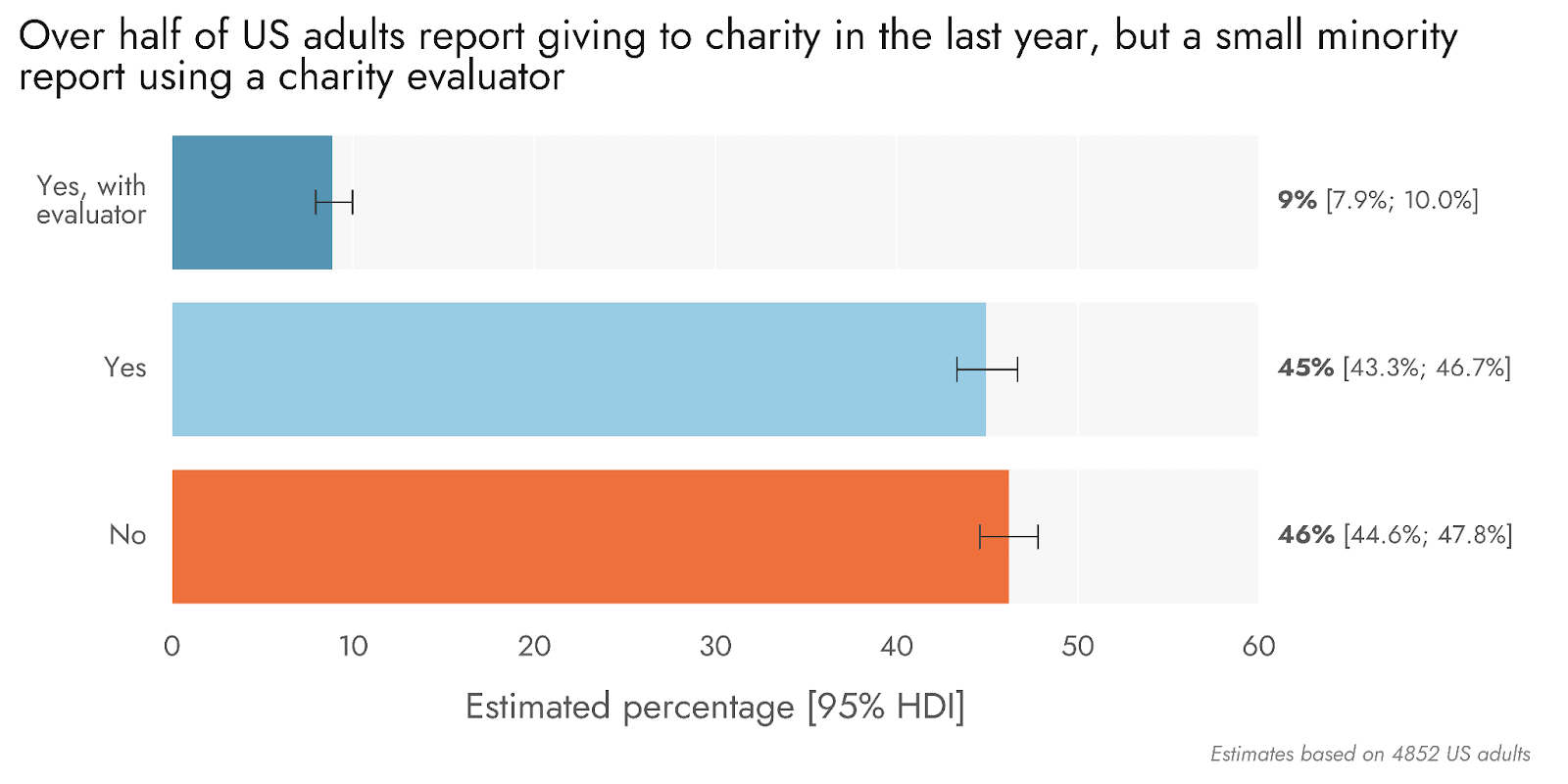
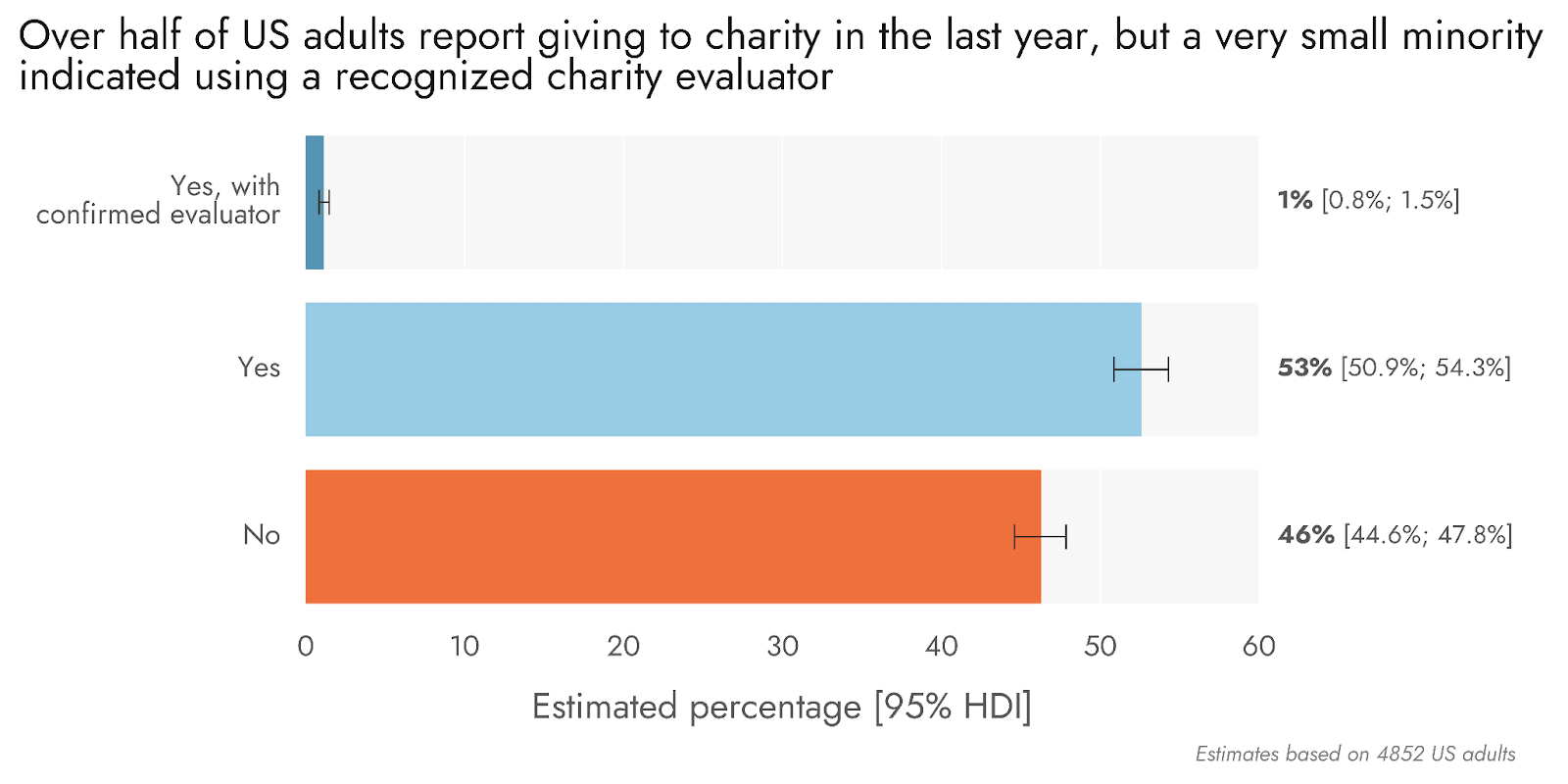
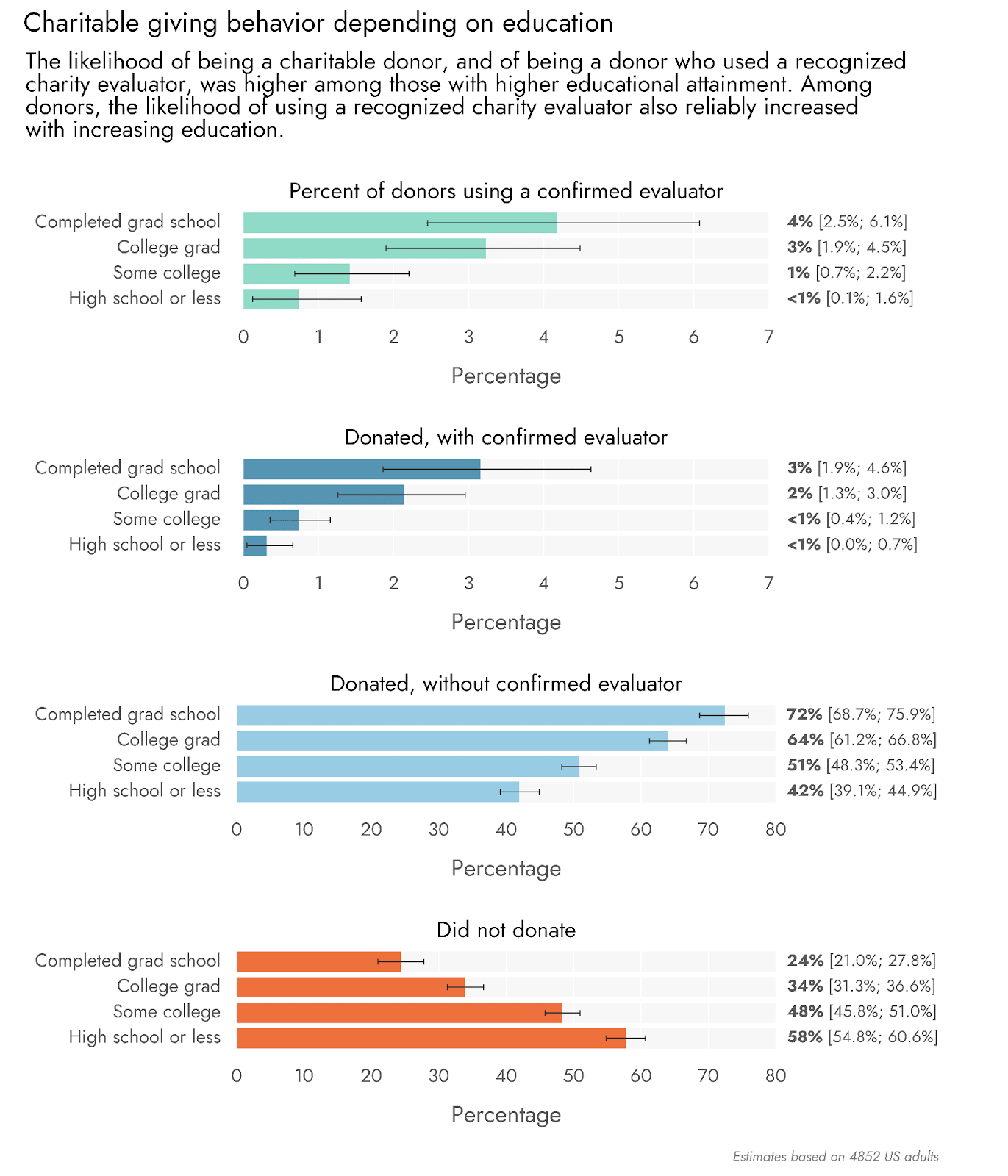
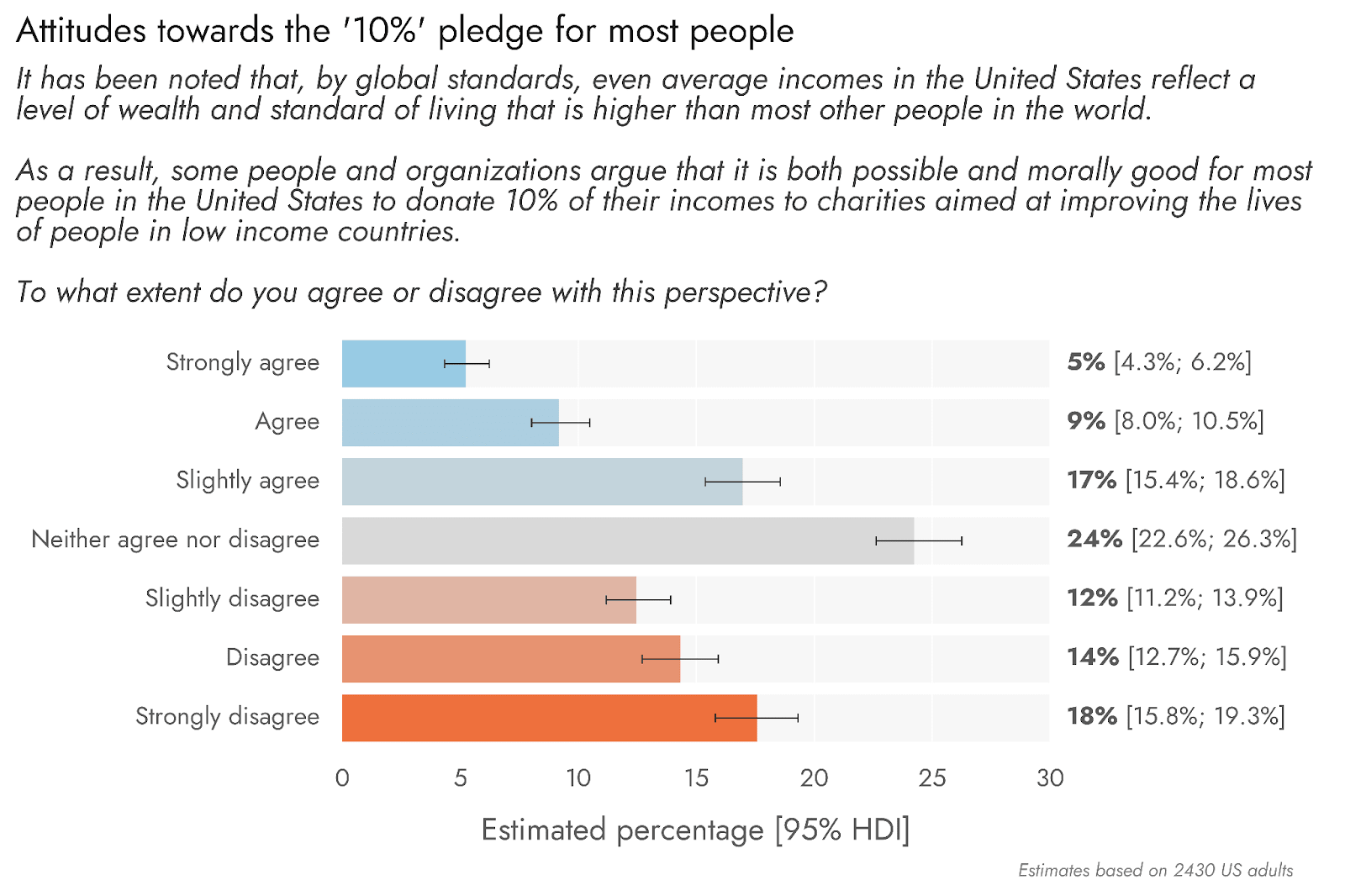
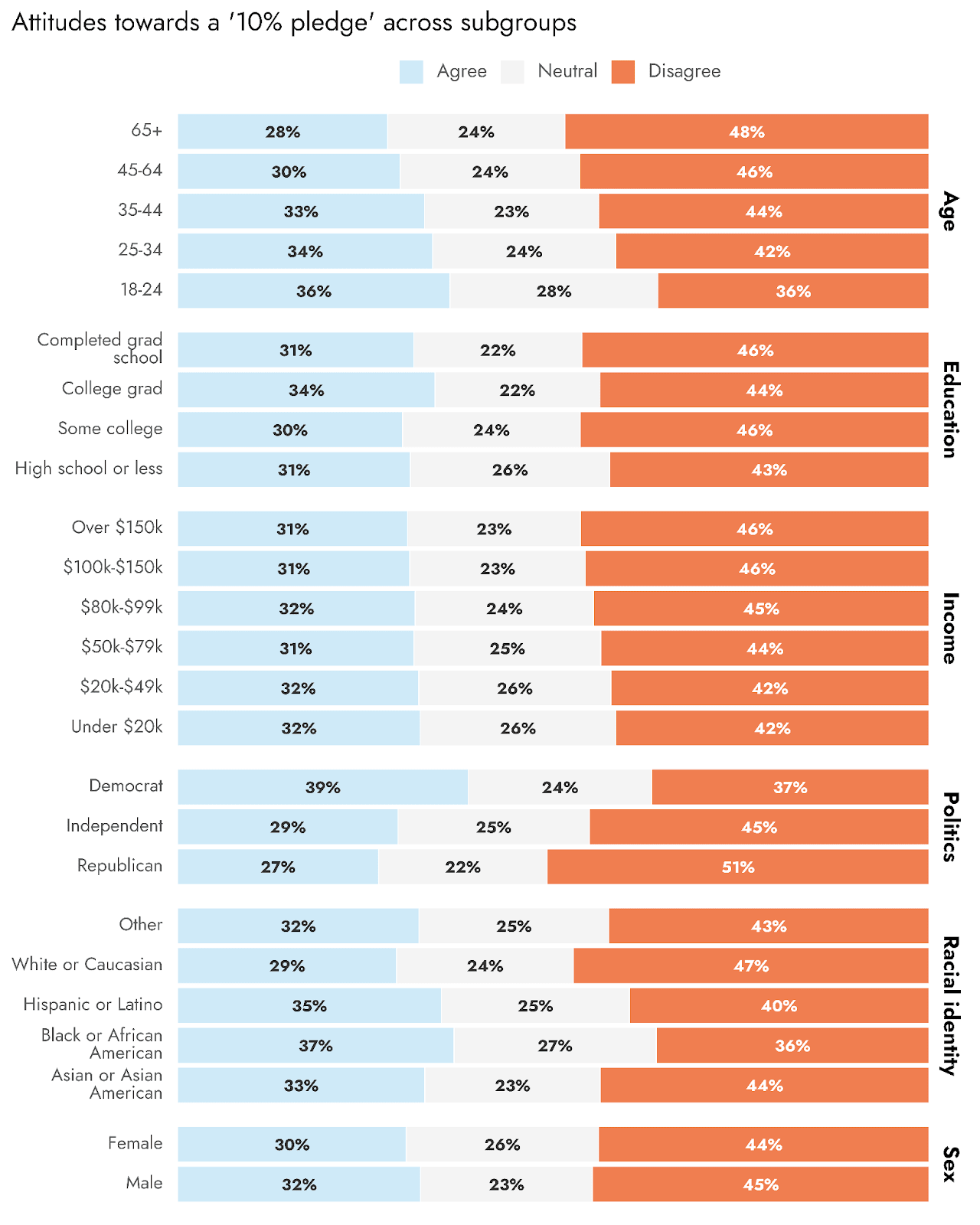
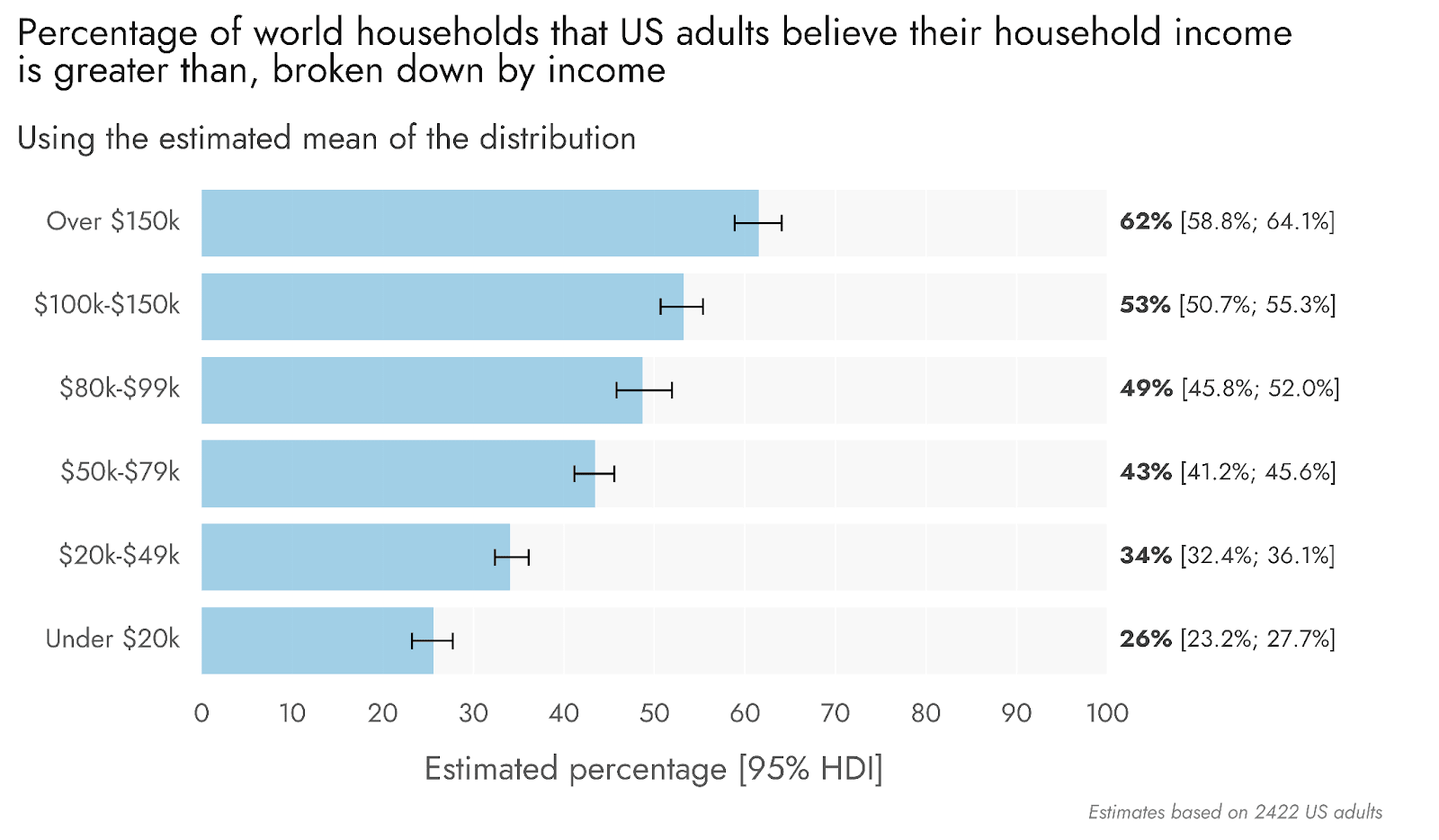
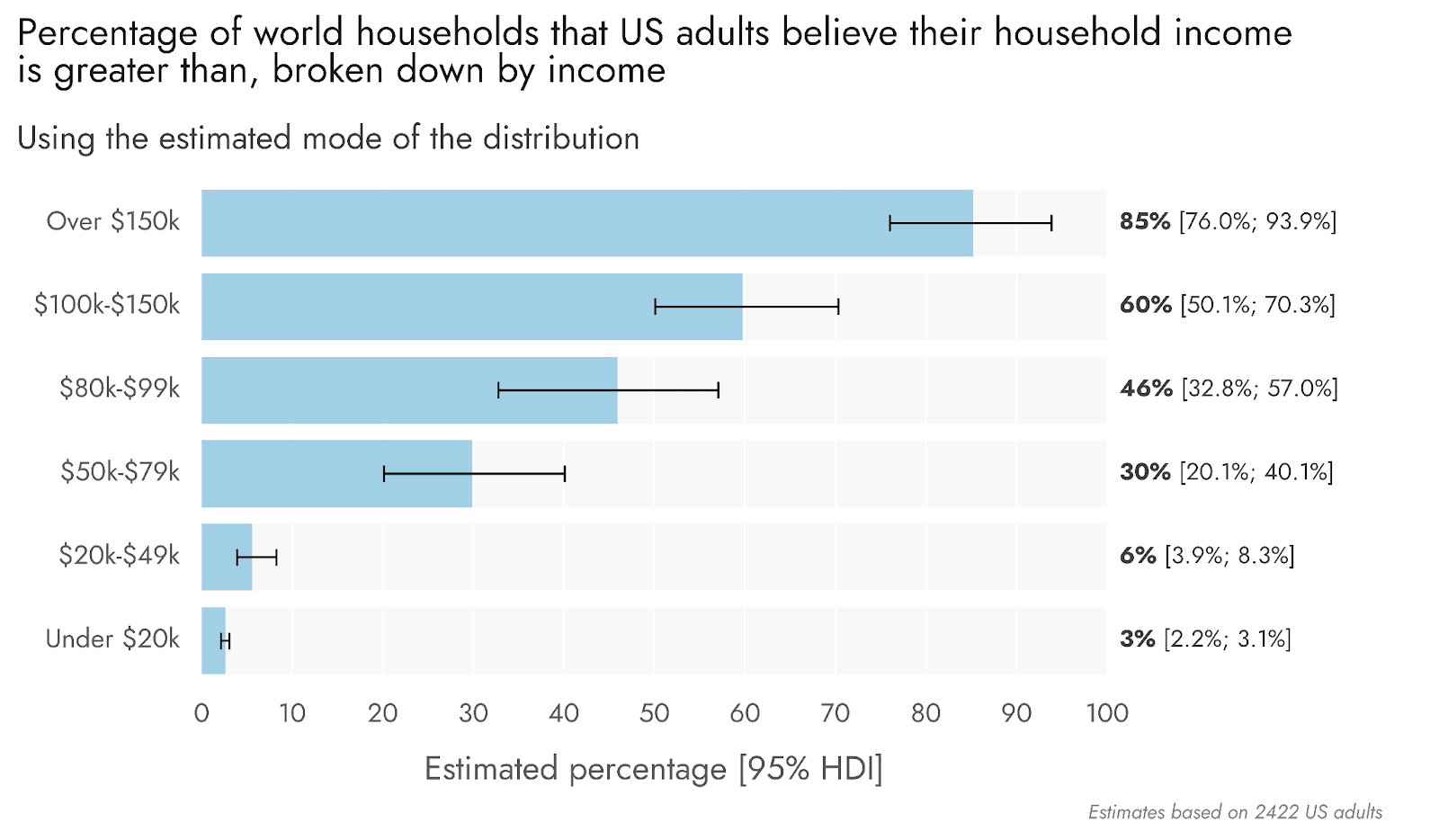

I was interested in a different presentation of the income estimate data, so I plotted it against the approximate actual income brackets:
I would love to see a deeper version of this graph that includes more of the raw data & has better error bars. I feel like this presentation is much more insightful!
Hi Huw, we considered doing something in this vein for the report but ultimately decided against due to needing to make a number of approximations. We can create this approximated graph that shows how people were very likely underestimating their relative wealth. However, there are reasons to take this with a pinch of salt, as it represents a very rough estimate - as we noted in the report, GWWC uses post-tax income and also uses information on family size. We don’t have information about family structure and we only get pre-tax income info, and in brackets. Therefore, the post-tax income numbers are generated with a very rough approximation to what they might be.